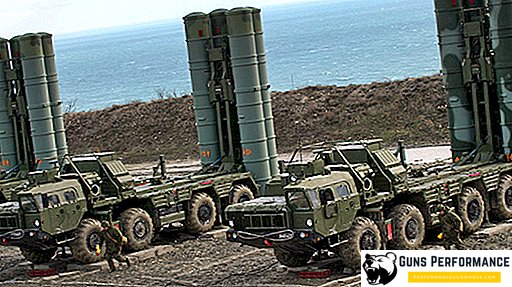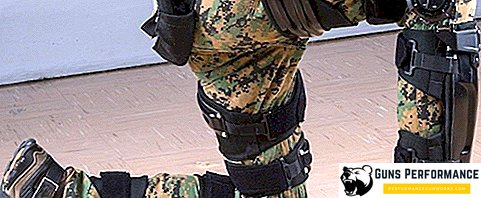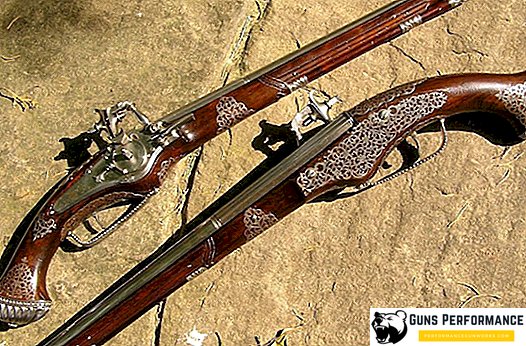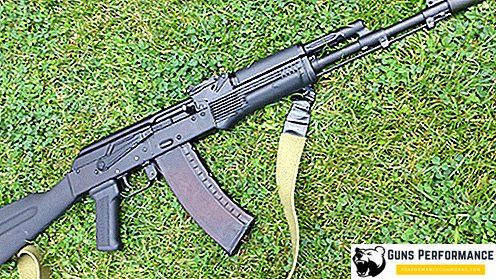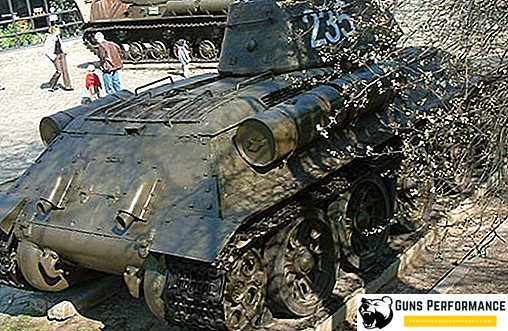The right to wear a krapovoi beret is considered to be the subject of extraordinary pride of the special forces of the Interior Troops of the Ministry of Internal Affairs of Russia, and putting on the maroon beret can, in all likelihood, be considered the most difficult challenge for all military personnel of the internal troops and for the officers of the special forces of the internal affairs bodies.
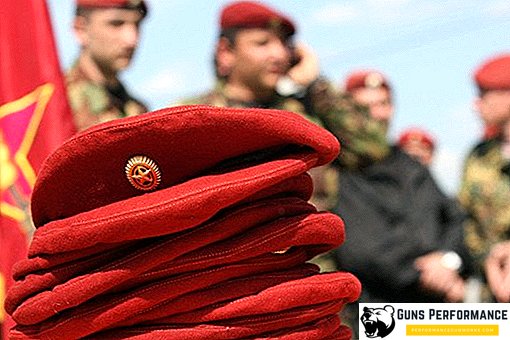
In the process of testing the stability of military personnel is subjected to the most diverse and multifaceted checks. Their endurance skills of colossal physical exertion are tested, volitional qualities, aspiration to follow to complete success, and, of course, the level of moral and psychological preparation are tested.
Special Forces VV: a little story about the krapovogo beret
What is a special semantic load carries the spotted beret? And in general, why do these berets actually have an extraordinary red color, krapovoy? It is known, for example, that the airborne troops, as well as the GRU special forces, are worn like a casual form of clothing, beret sky-blue colors. Not long ago, the Air Force soldiers were given the right to wear similar headgear, and that under certain special circumstances.
So, if everything is pretty understandable with the paratroopers and the GRU officers, then what explains the colors of the berets of the special forces of the internal troops? The right to wear a krapovogo beret is reserved for military service personnel and special forces soldiers, who possess sufficiently high professionalism, physical, moral and psychological qualities, as well as successfully coped with the qualification tests.
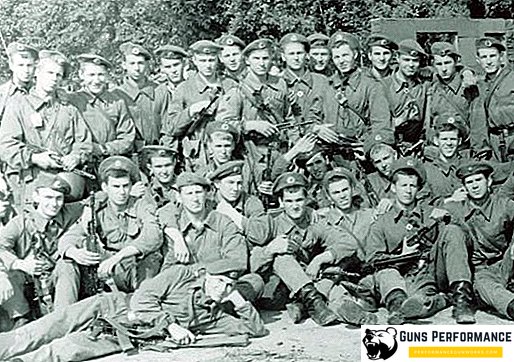
Moreover, the provision of a krapovogo beret can be made for showing courage and courage during the performance of official duties, as well as for outstanding services in the formation of special forces. Krapovaya coloring corresponds to the color of krapovyh epaulettes, which were worn by the conscript service of the MIA of the USSR. The same color was present on the band headgear in the system of the USSR Ministry of Internal Affairs.
Initially, the spotted berets were adopted as a uniform headgear of the special forces of the USSR Ministry of Internal Affairs in 1978 in one special unit. It was the 9th Special Forces Training Company in the 3rd Battalion, in the 2nd Regiment of the Omsdon Special Detachment (Special Motorized Rifle Division). The head of the former military training of the USSR Interior Ministry troops, Lieutenant General A. G. Sidorov, supported and approved this idea.
Moreover, he personally gave instructions to make an order to one garment factory for sewing the first 25 berets of krapovoy color itself. In addition, to make it clear to all that the special forces soldier is standing in front of him, they decided to tilt the krapovoi beret to exercise not to the right ear, as is customary when wearing ordinary berets, but to the left. The very first fighter who became the owner of the krapovogo beret was a military serviceman - Sergeant George Stolbusenko.

There was talk that the 9th company was formed specifically for the Olympics-80. Moreover, it was believed then that it was after the demonstration speeches of krapovy berets before the start of the Olympiad itself, those who plotted provocations, no longer wanted to do this, seeing who would have to meet if anything happened.
Special Forces VV: endurance or strength, which give preference?
And nowadays in these, as in many other Russian special divisions, special attention is always paid to the development of endurance, and not to an increase in the level of strength training. For the elite special forces of the explosives, this is of considerable importance, because in order to pass the exam on the maroon beret, a twelve-kilometer march-throw with full equipment must be made. In the process of passing the distance the soldiers will have to face the implementation of many tasks. And the march-throw is not the only element of the tasks that will need to be performed in the process of checking for the right to wear the spotted beret.
SWAT: surrender to the maroon beret, standards
Before conducting the tests, a certification commission is formed in parts. Prior to this, the number of probable participants is determined, and their professional suitability is checked. All this happens by passing the standards for physical training. In addition, an assessment of fire, tactical, special physical training. If these tests are rated lower than "excellent", then the military personnel are elementary not allowed to take exams.

Tests that likely competitors will encounter include a three-kilometer run, pull-ups on the crossbar, and a special complex with four exercises. Exercises include push-ups, "crouching-crouching," swinging the press, as well as jumping up from the half-squat position. All this is performed in the order of 7X10. Preliminary tests are carried out two to three days before the start of the main tests.
What is the purpose of the test for putting on the maroon beret
The main purpose of qualification tests is considered to be the selection of the best-trained military personnel who have enhanced individual physical and fire skills. These fighters will be treated in the future in a special way, because they will be very valuable specialists who will have to deal with real especially dangerous criminals.
As already mentioned, the test is based on a 12-kilometer march. All fighters wear all their equipment, including uniforms and personal weapons. Actually at this stage of the competition, most of the likely participants are eliminated. However, if an insufficient number of fighters was eliminated, the distance increases to eliminate the necessary number.
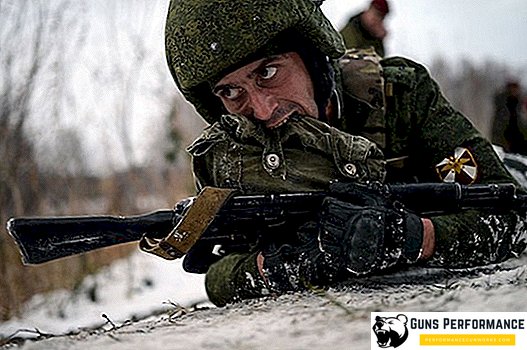
The march-throw includes running through the mountains, forcing the marshland and water bodies, carrying comrades, crawling in crepustus and others. Following the march-throw warriors pass the fiery assault obstacle course. In her passage with a personal weapon, a single shot is made up to check the condition of the weapon. In the event of a misfire, participants are disqualified.
Then fire training is taken, despite the strong fatigue of the fighters, which significantly affects the accuracy and accuracy of shooting. After the shooting range, the soldiers begin the assault on the "five-story building". With the use of special equipment, they descend from the roof and open fire on the targets. It is forbidden to hit targets that imitate hostages. Upon landing, the fighters must have time to use the radio station for a report on the end of the assault actions.
Acrobatic trials and hand-to-hand combat
This is followed by acrobatic exercises, including flips from the wall with a twist, forward somersaults with the use of a springboard, as well as lifts with extensions.
And finally, the decisive and most difficult test is a continuous hand-to-hand combat. Examinees that have reached this stage will fight for 12 minutes, 3x4. During the battles, the warriors will fight each other, and the two remaining rivals will be owners of the spotted berets. This is very difficult, because the special forces subjects are on the verge of exhaustion, and their rivals (“krapoviki”) are in excellent shape.
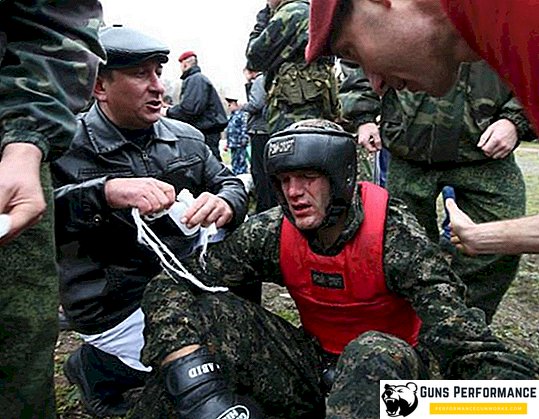
During the period of conducting hand-to-hand combat, the main condition for the subjects is to prevent a knockout. However, with passive combat, warriors may receive a warning. In the process of fighting, warriors can be seriously injured, but this is the high price to get a spotted beret.
The current passing test for getting krapovogo beret
To date, servicemen serving in military service in the internal troops do not pass the examination tests for obtaining a keeper beret. Now is the so-called veteran surrender to the maroon beret. Participation in it can take only people who have completed military service in the army, as well as contract servicemen.


